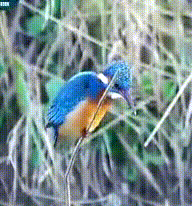THE PRACTICAL PANORAMA
Parent Page : Warm-up Exercises
Historical Perspective on Seeing
Over the course of hundreds of thousands of years the time spent on, and intensity of focused visual attention has steadily increased. From fashioning stone-axes and aiming arrows, to reading and writing; telescopes and microscopes, television, and now the miniature 6 x 3 inch cell phone.Even a century ago, we had panoramic countrysides to stimulate our panoramic awareness naturally, while walking to work. The modern city dweller is overwhelmed by either boring walls or colourful focal points: lights, adverts, signs, screens, and other people.
Being Safe
Panoraming is the way vulnerable animals stay safe in a world without walls and signposts.In its purist form it is a state of being purposefully and actively receptive.
It is a state of intensive waiting – ready and waiting for anything and everything which could indicate danger.
It isn't done by stopping focusing, focusing on not focusing, or letting-go of focusing. It's done by panoraming.
The ability to switch it on is the first step.
Go Outside
To do this in the optimal way, find somewhere outside with a full open view and no walls.There are a number of ways to develop the ability indoors, at night, and in winter. But to get the full effect with panoramic vision you need an open view, with birds and the occasional squirrel.
Street corners are good – but if you're standing up be sure to lean up against something.
Sit Down
Standing still is not a normal thing to do. Normally people fidget, shifting their weight from one leg to the other.You and your eyes aren't free to learn panoramic seeing when standing up and being still.
The easiest, most natural solution is to sit down for stability. I'll try and explain why, but such rationalisations are prone to exceptions.
You use your eyes (even subliminally and on rapidly varying objects) as a third balancing point. (I presume blind people use their hearing to do this, i'd be interested to learn, i imagine sometimes their stick is a third support point.)
Try closing your eyes and standing still for a minute. It depends on your basic sense of balance, but with both legs straight i think you will lose your balance after about 10 seconds. With one leg bent it will take maybe around 40 seconds. If you concentrate on balancing, you will be able to stand for a lot longer, but if you are concentrating on balancing then you are not concentrating on panoramic sensing.
If you've studied Chinese martial art exercises, then you'll know how to stand still with both legs bent. But learning this now will take you a longer than learning panoramic sensing. And still, you will be partly concentrating on earthing yourself in your feet.
Once you have established panoramic vision you can use it for balance when standing, but the need for balance holds us back when learning. So, sit down, it's easiest.
Keeping Still
 When you are moving, there is less awareness of everything else which is moving. Learn from animals. To be aware of every small change and movement in the environment be motionless and hold the head still.
When you are moving, there is less awareness of everything else which is moving. Learn from animals. To be aware of every small change and movement in the environment be motionless and hold the head still.
One Minute
Alternated with focused activity, animals often use it for only a few seconds. Humans may need a little more time to get the feeling, but the basic animal guidelines still apply, and especially to start with humans should do each exercise for only around half a minute, at a time.There are lots of reasons for starting with short periods.
a) It's a knack rather than something to be found by concentrated effort.
b) All human babies do it. It's easy and natural, it's a human birthright.
The repetitive impulse of short regular periods of stimulation will act as a catalyst: they are the best way to tell your subconscious "it's time to remember".
c) Short periods reduce the concentrated work-load, make it easy, make it fun.
d) A few seconds is all it needs to interrupt any repetitive thought.
e) To realise that you can turn it on any time, without doing anything to prepare for it.
f) Humans have no natural predators. Humans lack the motivation to go panoramic. 30 seconds creates a feeling of urgency – it's got to be done now, in a minutes time it'll be too late.
g) A minute a day which leaves you wanting more, is immeasurably better than 20 minutes trying to do it, and getting bored and distracted.
To generate motivation we need to enjoy something, and if doing this – or even trying to do this – is enjoyable or interesting, then we will want to repeat it.
It's a clever idea to check your feelings for a few seconds after doing it. By consciously recognising the sort of feelings created by panoramic sensing, we will generate curiosity about it and want to repeat it.
If you want to make it a priority, then instead of long meditation sessions, do it several times a day for 30 seconds.
Once you can do it, then experiment and give me feedback.
Small Ideas
Imagine you're 6 inches tall and life is full of danger, but remember you're 6 feet and human so you don't need to run or escape from buzzards.Don't make it unnatural or conflicted. If a heron flies over and you want to focus on it, then focus, herons are lovely it's natural to focus. If a sparrow lands nearby, be friendly.
Trust your own feelings to do what you need to do, to be able to empathise with vulnerable animals.
Imagine how it was sitting by the caves and in the trees .... relaxing, smelling the wind and listening far into the distance ... for food and danger .... for anything and everything which was around.
Once You Can Do It
Once you can do it, you will find your own ways into it. Generally it's best to start with seeing, if there's nothing interesting moving, then carry on seeing and start to listen.It depends on the situation, sometimes sounds may need your attention. Or if your thoughts are racing, to slow them down, then start with listening.
Under some conditions i notice a sort of white shimmering line around the edges. I think this may be some sort of reflection form the eye lashes. Whatever it is, it's an indication that you're seeing panoramically.
Additional Pages
The Various Forms of Listening Meditation
The Various Modes and Intensities of Sensing
An Everyday Panoramic Experience
Secondary Lookout Experiments
A Few Extra Ideas
Riding Trains
A good idea is, sitting in a train, facing in the direction of travel, focus on something in front or up on the roof, and then watch the world going by on both sides.The peripheries always diverge when facing forward, they encourage an expansion of the sidewards vision; if you sit going backwards, the visual field converges.
Trains are better than busses because there are less stops; and the less other passengers there are, the better it works. Maybe it works as passenger in a car, i've never tried it out.
When Walking
While walking in nature on uneven ground, look a little above the horizon, this activates the downward panoramic vision. This is an idea i picked up 40 years ago from Carlos Castañeda's books on Don Juan, before i learnt anything about panoramic sensing.The reason i found it good and remembered it, was because when walking in nature, to adapt to the uneven ground, i involuntarily and immediately started bending the knees and walking with a 'bounce'.
Relaxed walking in nature can often bring us to the edge of this way of sensing. Most people are vaguely aware of about 60°-90° of the panoramic horizontal centre field. Making this conscious is a good idea.
Comparison with Meditation
This is not really a meditation. I'm not wanting us to all space out in a new panoramic world. To use the panorama senses continuously would probably lead to trance or futility (or maybe autism).Meditation normally uses inspiring focal points. Panoraming doesn't replace focused activity, it makes focused activity safe. It's value is when coordinated or alternated with focused activity. So it would be advantageous to incorporate panoramic periods in any meditation.
Animals dozing can perhaps be compared to meditation. When dozing panoraming can be used for hours at a time, but then animals use it in a less intense manner. Longer period can be combined with inner-body awareness. Inner-body awareness opens up new dimensions; we can listen focused on a bone in the spine, or listen internally in a panoramic way.
Limitations
These days, i have a balcony with about 160° sidewards vision, i can position myself so i have one side open and a window reflection on the other, but up and down is concrete. Tiny flies sometimes fly by, but generally i have to adapt, and remind myself to look at the ceiling, walls and floor.The wall behind on two sides is annoying because it inhibits sound. It distorts the sense of spacial reality. I'm sure this is something blind people would have reported, the sense of where we are in relation to the sounds around us, is a valuable aspect of reality.
Group Panoraming
 In its most intense natural form panoraming is a solitary practice. Herds and animal groups have different behaviour patterns to solitary animals, they are more relaxed. The reason is obvious, in a herd or any animal group, only one needs to pick up any warning sign, this is actively communicated, and the others respond without hesitation or question.
In its most intense natural form panoraming is a solitary practice. Herds and animal groups have different behaviour patterns to solitary animals, they are more relaxed. The reason is obvious, in a herd or any animal group, only one needs to pick up any warning sign, this is actively communicated, and the others respond without hesitation or question.I remember once watching a blackbird, a pheasant, a deer and a hare, all grazing within two meters of each other – a wonderful collection of different sensory abilities – and they were all more or less facing each other, randomly taking it in turns to check their surroundings.
But just as a nice extra idea: Humans primary sense is vision, so any sensible two humans would do it back to back. Any group would be in a circle back to back.
Why not have a cuppa? (cup of tea)
Many forms of diversion can help bring life's problems in balance, give new perspectives, even bring peace.But this isn't just letting go or relaxing. The purpose isn't to let go, that just happens by itself when you are panoramically watchful. The purpose is to be watchful, this involves stopping all thinking and doing.
And there's a big difference between diverting our attention by doing something else, which inevitably further reinforces the focusing habit – and directly and actively stopping the system which generates all abstract ideas.
Additional Pages
The Various Forms of Listening Meditation
The Various Modes and Intensities of Sensing
An Everyday Panoramic Experience
Secondary Lookout Experiments
Back to Chapter One : The Animal Teachings
Back to THE PANORAMA SENSES Priority Pages